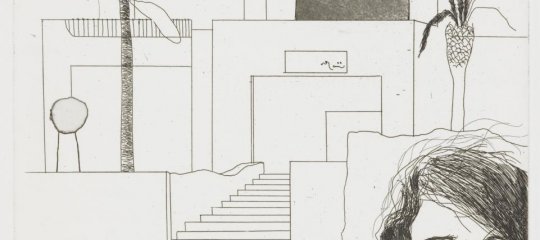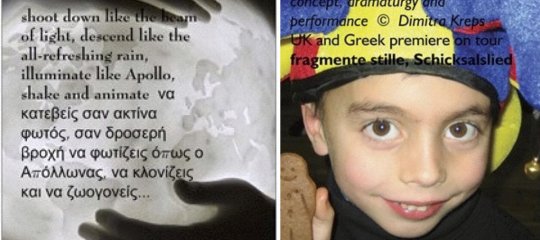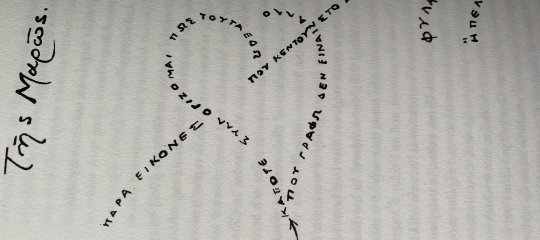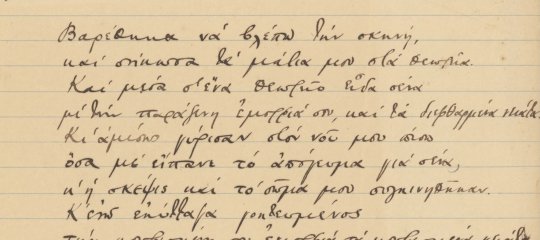Συνέδριο για τη βελτίωση των ιστορικών διδακτικών εγχειριδίων
kostasper writes, "Κάιρο,15-12-2004
Με μεγάλη επιτυχία και δημοσιογραφική κάλυψη ολοκληρώθηκαν στο Κάιρο οι εργασίες του Διεθνούς Συνεδρίου, που πραγματοποιήθηκε από τις 12 ως τις 14 Δεκεμβρίου 2004 στην έδρα του Συνδέσμου Αραβικών Χωρών, με θέμα «Ευρω-Αραβικός διάλογος: Η εικόνα του αραβο-ισλαμικού πολιτισμού στα ευρωπαϊκά ιστορικά εγχειρίδια»"
17 Δεκεμβρίου 2004
Το Συνέδριο διεξήχθη υπό την αιγίδα της Unesco (Mediterranean program), του Συνδέσμου Αραβικών Χωρών, του Ευρωπαϊκού Συμβουλίου, της Isesco (:Ισλαμικός Οργανισμός για την Εκπαίδευση, τις Επιστήμες και τον Πολιτισμό στον Αραβικό και Ισλαμικό κόσμο, δηλ.παρόμοιος με την Unesco Οργανισμός), της Εθνικής Αιγυπτιακής Επιτροπής, της Εθνικής Επιτροπής των Ενωμένων Αραβικών Εμιράτων, της Εθνικής Σαουδαραβικής Επιτροπής και του Σουηδικού Ινστιτούτου Αλεξανδρείας. Προσφώνηση προς τους συνέδρους απηύθυνε ο Γενικός Γραμματέας του Αραβικού Συνδέσμου κ. Αμρ Μούσσα. Χαιρετισμούς απηύθυναν επίσης ο Υπουργός για την Ανώτατη Εκπαίδευση κ.Αμρ Σαλάμα καθώς και οι εκπρόσωποι των άλλων Οργανισμών.
Η Ελλάδα συμμετείχε με δύο εκπροσώπους του ΥΠΕΠΘ και του Παιδαγωγικού Ινστιτούτου, δηλ την κ.Αναστασία Κερκίνη-Κούτουλα, Διδάκτορα της Ιστορίας και Σύμβουλο Εκπαίδευσης, και τον επίσης Σύμβουλο Εκπαίδευσης Διδάκτορα κ.Σταύρο Γιαγκάζογλου. Οι δυο Έλληνες εκπρόσωποι συμμετείχαν παράλληλα και σε ομάδα εργασίας με τον εκπρόσωπο της Αιγύπτου, καθηγητή της Κλασικής Φιλολογίας στο Παν/μιο El Azhar, ελληνομαθή Dr Tarik Radwan, o οποίος διάβασε την εισήγησή του προς το Συνέδριο με κείμενο που αποδόθηκε στην ελληνική από τον Φιλόλογο Κώστα Περτσούνη, διδάσκοντα τη Νεοελληνική Γλώσσα στο Παν/μιο του Καΐρου. Η ελληνο-αιγυπτιακή ομάδα εργασίας εργάστηκε σε ευχάριστο κλίμα και με διάθεση εποικοδομητικού διαλόγου, κατά δήλωση του κ.Radwan, προς τον υπογράφοντα. Κατά δήλωση του ίδιου, η ένταση των συνέδρων καταπραΰνθηκε κι επικράτησε κλίμα αμοιβαίας κατανόησης χάρη στο παράδειγμα καλοπροαίρετης προσέγγισης της Ελληνο-Αιγυπτιακής ομάδας. Αυτή επηρέασε θετικά και τους υπολοίπου συνέδρους με τις ομιλίες των εκπροσώπων.
Το θέμα του συνεδρίου πολύ ενδιαφέρον και λόγω επικαιρότητας του προβληματισμού και λόγω της σπουδαιότητας των σχέσεων Ευρώπης-Αραβικού κόσμου. Προπομπός τολμηρός στάθηκε σ’αυτό η δήλωση του Προέδρου της Ελληνικής Δημοκρατίας για την ανάγκη αναθεώρησης των σχολικών εγχειριδίων. Αλλά και τα συμπεράσματα του Συνεδρίου είναι ενθαρρυντικά, καθότι οι χορηγοί και διοργανωτές του είναι Οργανισμοί με μεγάλο κύρος. Στα συμπεράσματα περιλαμβάνονται προτάσεις και συστάσεις:
Προτάσεις:Τονίστηκε η ανάγκη μεγάλης συνεργασίας για την απάλειψη παρανοήσεων και η ανάγκη υποστήριξης των σπουδαστικών ανταλλαγών.
Συστάσεις:
α)Μεσοπρόθεσμοι στόχοι: Διακρατική συμπαραγωγή διδακτικού υλικού και οδηγίες προς τους εκπαιδευτικούς, προσφορές κειμένων από συγγραφείς και υποβολή προτάσεων για την ανάπτυξη διδακτικού υλικού.
β)Βραχυπρόθεσμοι στόχοι:
- Διόρθωση λαθών στα εγχειρίδια σύμφωνα με ακαδημαϊκά standards
- Συζήτηση για τις βασικές αρχές της Ιστορίας ειδικά η αρχή της multiperspectivity, όπως σημειώνoνται στα ντοκουμέντα και τις Οδηγίες του Ευρωπαϊκού Συμβουλίου.
- Συζήτηση για τον τρόπο παρουσίασης κρίσιμων και επίμαχων θεμάτων της Ιστορίας και του Πολιτισμού στα διδακτικά βιβλία των δύο περιοχών.
- Ενθάρρυνση σπουδαστικών ανταλλαγών και καθιέρωση partnership μεταξύ Σχολείων καθώς και jointed teachers training seminars.
Κώστας Περτσούνης.
- Εισέλθετε στο σύστημα για να υποβάλετε σχόλια










